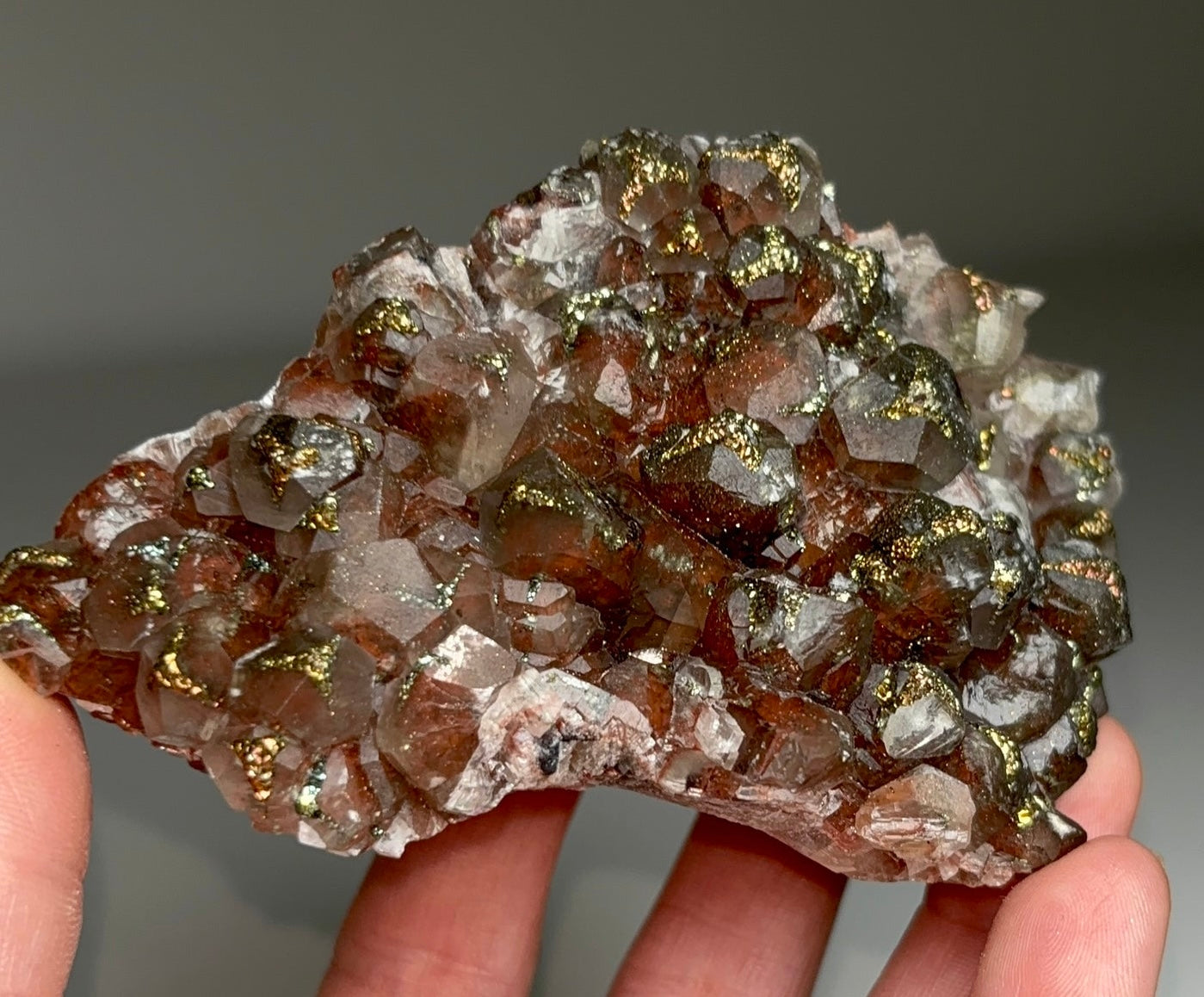
Sign up for our newsletter
Subscribe to our emails

Septarian Dragon Stone Geode Egg This is a really cool septarian "dragon egg" geode collected in the Betsiboka Region of Madagascar. The hollow cavity is full of beautiful black & brown aragonite and calcite crystals. It is a hollow septarian nodule which has been polished into an egg shape, and the natural cracked pattern of the septarian gives it the appearance of a dragons egg. A spectacular display piece. Septarian Nodules are concretions containing angular cavities or cracks, called "septaria", filled with calcite and aragonite. A concretion is a hard, compact mass of rock that often forms around decaying organic matter. In the case of septarian nodules, the concretions formed around decaying sea life in a marine environment. The exact mechanism for how the cracks form in the concretions is a mystery. One possible mechanism is the dehydration of the clay-rich core of a concretion, causing it to shrink and crack. The cracks could also be caused by gas expansion produced by the decaying organic matter within a concretion. Earthquakes have also been suggested as yet another mechanism. The cracks in the concretions are then filled in with minerals such as calcite (yellow), aragonite (brown), and sometimes pyrite, causing very interesting patterns. They have often been described as looking like dragon's skin. They are frequently found as geodes with hollow, calcite crystal-filled cavities. More rarely, the fossils that originally started the formation of the concretion are still preserved in the septarian. From: Ambondromamy, Betsiboka Region, Madagascar Size: 104 mm Weight: 787 Grams
$110.00

Septarian Dragon Stone Geode Egg This is a really cool septarian "dragon egg" geode collected in the Betsiboka Region of Madagascar. The hollow cavity is full of beautiful black & brown aragonite and calcite crystals. It is a hollow septarian nodule which has been polished into an egg shape, and the natural cracked pattern of the septarian gives it the appearance of a dragons egg. A spectacular display piece. Septarian Nodules are concretions containing angular cavities or cracks, called "septaria", filled with calcite and aragonite. A concretion is a hard, compact mass of rock that often forms around decaying organic matter. In the case of septarian nodules, the concretions formed around decaying sea life in a marine environment. The exact mechanism for how the cracks form in the concretions is a mystery. One possible mechanism is the dehydration of the clay-rich core of a concretion, causing it to shrink and crack. The cracks could also be caused by gas expansion produced by the decaying organic matter within a concretion. Earthquakes have also been suggested as yet another mechanism. The cracks in the concretions are then filled in with minerals such as calcite (yellow), aragonite (brown), and sometimes pyrite, causing very interesting patterns. They have often been described as looking like dragon's skin. They are frequently found as geodes with hollow, calcite crystal-filled cavities. More rarely, the fossils that originally started the formation of the concretion are still preserved in the septarian. From: Ambondromamy, Betsiboka Region, Madagascar Size: 106 mm Weight: 744 Grams
$118.00

Subscribe to our emails